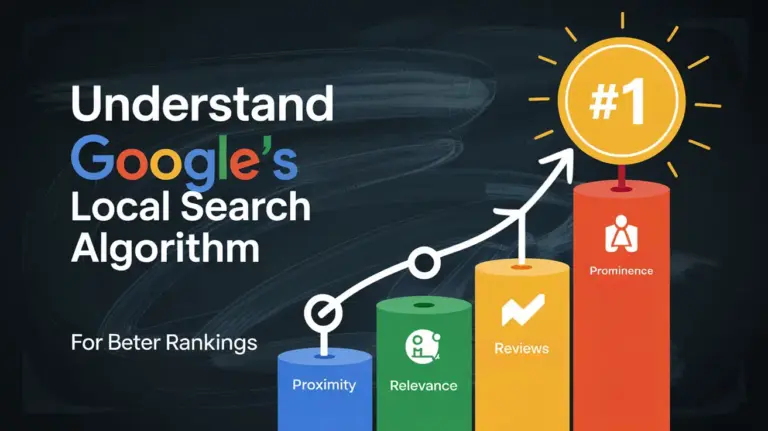
As industry leaders in marketing services, we at Popproxx understand the intricacies of developing a robust digital marketing budget. The cornerstone of any successful campaign lies in the ability to strategically plan and allocate financial resources. Our expertise in marketing budget optimization is designed to help businesses of all sizes maximize ROI while employing effective budgeting techniques. Crafting an actionable plan is more than just crunching numbers; it’s about aligning your financial capabilities with marketing ambitions that drive growth and profitability.
We pride ourselves on guiding companies through the nuanced process of budgeting for marketing. Developing a budget isn’t just about how much you spend, but where and how you invest each dollar. Let us walk you through the steps of how to plan your marketing budget to ensure every investment counts toward reaching your goals.
Key Takeaways
- Strategic budget planning is essential for aligning marketing ambitions with financial capabilities.
- Optimizing your marketing budget requires an understanding of where to allocate funds to yield the best ROI.
- Customized budgeting techniques are key to addressing unique business needs and market demands.
- Analytical insights guide informed decision-making and contribute to successful resource allocation.
- Popproxx offers professional guidance in crafting and implementing a comprehensive marketing budget plan.
Understanding the Importance of a Strategic Marketing Budget
In our commitment to fostering business growth, we recognize that grasping the marketing budget definition and its strategic importance is essential. A sound marketing budget dictates the blueprint for how resources are allocated towards marketing activities. Often, this encompasses various facets including outbound advertisements, inbound marketing efforts, and personnel resources necessary for execution and management. Establishing a strategic marketing budget is not about merely earmarking funds; it’s about judicious investment towards achieving significant business goals.
Defining What Constitutes a Marketing Budget
Comprehending the components that form a marketing budget is foundational to marketing budget management. This involves the recognition of expenditures that range from paid media placements and creative assets to marketing software subscriptions and staff compensation. A well-defined budget serves as the financial reflection of a marketing plan, enabling us to map out anticipated costs and measure returns on investment with precision.
Aligning Marketing Efforts with Business Objectives
One key to our success lies in ensuring that budget alignment is thoroughly in sync with our overarching business goals. Each dollar spent is aimed at driving concrete results, such as bolstering customer acquisition or enhancing brand visibility. Clear and measurable objectives steer our spending, granting us the dexterity to course-correct and capitalize on marketing opportunities as they arise.
Emphasizing the Role of Market Analysis in Budget Planning
Integral to sculpting an effectual marketing budget is the market analysis, which illuminates where our brand stands in relation to competitors and market trends. By diving deep into the analytics, we can make informed decisions about campaign targeting, channel mix, and resource allocation, ensuring that every aspect of the budget is geared towards optimal market penetration and return on investment.
How to Plan Your Marketing Budget for Optimal Impact

Effective planning of a marketing budget is a dynamic process that ensures every dollar is strategized for maximum impact. At the core, it harmonizes business objectives with financial realities, setting the stage for targeted marketing investment and sustainable growth.
Clarifying Business Goals for Targeted Marketing Investment
Our initial step involves crystallizing the business objectives. A laser-focus on business goals ensures that marketing investments are not only strategic but also promise the highest dividends in enhancing brand visibility and driving sales increments. We treat this alignment as the cornerstone of planning a marketing budget.
Analyzing Past Spend and Forecasting Future Needs
Analyzing spend patterns sheds light on the effectiveness of past marketing endeavors. This retrospective view forms the foundation for future budget forecasting, allowing us to adapt and allocate with precision.
Utilizing Customer Retention Metrics for Budget Adjustments
Next, we dive into customer retention metrics—a critical gauge of marketing success. High retention rates signal a successful marketing strategy and guide future investment, while low rates point to areas needing attention and possible budget reallocation.
Adapting to Evolving Digital Marketing Trends
Finally, we keep our fingers on the pulse of digital marketing trends, ensuring our strategies are flexible and current. Adapting to the digital marketing landscape means pivoting with agility to harness new channels and techniques that resonate with our target audience.
To illustrate, let us review the performance of two different marketing strategies used in the previous year.
| Marketing Strategy | Cost | Customer Acquisition | Retention Rate | ROI |
|---|---|---|---|---|
| Email Campaigns | $10,000 | 350 new customers | 75% | 150% |
| Pay-Per-Click Ads | $15,000 | 420 new customers | 40% | 120% |
Our analysis reveals that while pay-per-click ads brought a higher quantity of new customers, email campaigns resulted in better customer retention and ROI. Moving forward, we will adjust our planning marketing budget to prioritize strategies that have demonstrated the highest value.
Allocating Resources for Marketing: A Data-Driven Approach
In a landscape where every dollar must be accounted for, we focus on a data-driven strategy to ensure every aspect of our marketing budget is optimized for performance. Understanding where to allocate marketing resources is not a guessing game; it’s a science. We track and analyze data meticulously to inform budget allocation for marketing. We prioritize channels that drive conversions, scaling up investment in high-performing areas while scaling back in others. This approach is central to our strategy for ROI optimization.
Let’s break down how we manage our resource allocation using real data:
- We begin by collecting data on all marketing channels to understand their impact on our bottom line.
- Metrics such as conversion rate, cost per acquisition, and customer lifetime value are analyzed to identify the most effective strategies.
- We forecast potential ROI to guide future marketing investments, weighing this against the expense of various campaigns.
| Marketing Channel | Conversion Rate | Cost per Acquisition | ROI |
|---|---|---|---|
| Email Marketing | 5.1% | $10 | 400% |
| Social Media Ads | 2.2% | $30 | 150% |
| Content Marketing | 3.5% | $20 | 250% |
| Pay-Per-Click | 4.0% | $15 | 200% |
Our commitment to a data-driven approach consistently results in strategic resource allocation that maximizes our marketing budget and optimizes our ROI. The above table serves as an example of how data can influence decision-making in allocating marketing funds. By looking at these metrics, we can decide which marketing channels deserve more investment and which should be reconsidered.
Effective Marketing Budgeting: Strategies and Management

In marketing budget strategies, prudent budget assessment ensures prosperous outcomes. Our approach highlights the need for rigorous evaluation of financial commitments to marketing activities and their corresponding return on investment (ROI). We diligently manage budget allocation to maximize efficiency and drive growth.
Determining Costs of Campaigns and Assessing ROI
Conducting a thorough ROI evaluation encompasses tracking campaign spending and measuring their impact. We employ various methods to quantify the efficacy of each dollar spent, thus shaping our drive towards high-ROI channels.
Investing in High ROI Channels and Cutting Underperformers
Focusing on performance allows us to intensify investments in channels manifesting elevated ROI figures. Conversely, we do not hesitate to cut ties with underperforming outlets, redirecting those resources to more fruitful avenues.
Designating a Budget Portion for Innovative Experiments
We believe in reserving a segment of our budget for innovative marketing experiments. These ventures may not guarantee immediate results, yet they can potentially disrupt the market and significantly open new doors for engagement.
Marketing Automation and Tools for Budget Efficiency
Embracing technology, particularly marketing automation and budget management tools, is a hallmark of our strategy for enhancing budget efficiency. These technological solutions streamline workflows, offer precise analytics, and engender cost savings in the long haul.
At Popproxx, our commitment to providing precise and effective marketing budget guidance is unwavering. We believe in employing a blend of tried-and-true practices and cutting-edge innovations to ensure that our marketing spend achieves its intended impact.
Insights on Industry Trends and Competitive Analysis
At Popproxx, we pride ourselves on delivering marketing budget insights that reflect current industry benchmarks and anticipate future shifts in your sector. Our mission is to provide you with in-depth industry spending insights and marketing trend analysis so you can make well-informed decisions to stay ahead.
We embrace competitive analysis as an opportunity to understand the landscape in which your business operates. By identifying what competitors are investing in and cutting back on, we can offer tailor-made strategies for budgeting for competitive advantage. Here’s how we approach this crucial aspect of your marketing strategy:
- Comprehensive Market Overview: We start by distilling the vast data pool to present you with clear industry trends.
- Competitor Spend Habits: Next, we gather intelligence on your competitors’ spending to provide a comparative context for your marketing investments.
- Identification of High-Performance Strategies: We spotlight the marketing strategies that are generating the best ROI in your field.
With this information, we can guide your decisions on where to distribute your marketing budget for the highest impact.
Here’s a snapshot of an industry spending comparison:
| Industry Sector | Average Marketing Spend | Our Client’s Average Spend | Competitor’s Average Spend |
|---|---|---|---|
| Technology | 18% | 15% | 20% |
| Retail | 14% | 12% | 15% |
| Healthcare | 12% | 10% | 14% |
Combining insights from these analyses, we formulate a robust marketing plan that aligns with your ambitions and ensures you gain a competitive edge in your respective industry.
Conclusion
In summing up the key takeaways from our comprehensive exploration of marketing budget strategies, it’s undeniable that adherence to marketing best practices is not merely a recommendation but an imperative for contemporary businesses. Recognizing the profound impact of a well-conceived and meticulously implemented marketing budget plan cannot be overstated. This is where our deep-rooted dedication to fostering Popproxx marketing success comes to the forefront, underscoring our pledge to empower your business’s growth.
Reflecting on Marketing Budget Best Practices
Our discussion has reinforced the conviction that successful marketing budgeting hinges on a dynamic blend of foresight, precision, and flexibility. We have delved into the essence of creating a budget that is both bespoke to your brand’s requirements and responsive to the market’s pulse. By implementing a custom marketing budget plan, you are taking a pivotal step towards ensuring that each dollar spent is an investment in your brand’s enduring prosperity.
Our Commitment at Popproxx to Your Marketing Success
At Popproxx, we stand committed to the accretion of your marketing success. Our expert team is equipped to journey with you through every phase of marketing budget reflection and execution, helping you cleave to the path that leads to an impressive return on investment (ROI). Every strategy we recommend is tailored to mirror the unique contours of your goals and visions.
Next Steps for Implementing Your Custom Marketing Budget Plan
We encourage you to engage with us as we embark on the next steps toward realizing a marketing budget that encapsulates your brand’s ethos and aspirations. Together, we will navigate the nuances of implementing your marketing budget—crafting, refining, and actualizing a financial blueprint that prioritizes efficacy and ROI. Let us unite in sculpting a narrative of triumph woven through the strategic threads of an exceptional marketing budget.

FAQ
What factors should be considered when planning a digital marketing budget?
When planning a marketing budget, consider factors such as business goals, historical spending patterns, target audience, market trends, competitive landscape, and expected ROI on different channels. It’s also important to account for staffing, tools, technology investments, and potential experimental initiatives.
How does Popproxx approach marketing budget optimization to maximize ROI?
At Popproxx, we focus on a data-driven approach that analyzes past campaign performance, market trends, and customer retention metrics. We then allocate funds to high-ROI channels and adjust strategies based on analytics to ensure that every dollar spent contributes effectively to the clients’ business goals.
What is the role of market analysis in planning a marketing budget?
Market analysis plays a pivotal role in budget planning as it helps businesses understand their position within their industry, identify opportunities and threats, and gauge the effectiveness of past marketing efforts. This analysis informs the marketing budget’s strategic allocation to channels with the greatest potential for growth and customer engagement.
How important is it to align your marketing budget with your business objectives?
Aligning your marketing budget with business objectives is crucial as it ensures that the marketing efforts directly contribute to the company’s overarching goals, such as revenue growth, brand awareness, or market expansion. It ensures that the budget effectively achieves specific, measurable outcomes.
Can you explain the benefits of a targeted marketing investment?
Targeted marketing investment involves directing resources into specific areas that are most likely to yield results aligned with business objectives. Benefits include higher conversion rates, more effective customer engagement, increased sales, and better allocation of marketing resources, leading to improved ROI.
Why are customer retention metrics important for budget adjustments?
Customer retention metrics are vital as they indicate the success of current marketing strategies in maintaining customer engagement and loyalty. High retention rates suggest effective marketing, guiding future budget allocation toward tactics that continue to nurture and retain customers. Conversely, if these metrics are low, they highlight areas needing budget reallocation.
How does adapting to marketing trends impact marketing budget planning?
Adapting to current marketing trends allows businesses to stay relevant and competitive. It impacts budget planning by necessitating the incorporation of new and emerging channels into the marketing mix, which may require shifts in budget allocation to capitalize on these growth opportunities.
What are the benefits of using marketing automation and management tools for budget efficiency?
Marketing automation and management tools can streamline campaign execution, improve targeting, track performance, and provide actionable insights. This results in reduced manual labor, more precise budgeting, and better allocation of resources, enhancing overall marketing budget efficiency.
How do insights on industry trends and competitive analysis inform the creation of a marketing budget?
Insights on industry trends and competitive analysis help businesses understand the standard spending within their sector, the effectiveness of different marketing strategies, and the channels competitors are leveraging. This knowledge informs the creation of a budget that allows for competitive positioning and making informed decisions on where and how much to invest.
How do we start implementing a custom marketing budget plan at Popproxx?
To start implementing a custom marketing budget plan at Popproxx, we work collaboratively with clients to understand their unique objectives, conduct a thorough market and internal analysis, and use industry benchmarks to inform budget allocation. From there, we craft a tailored, dynamic marketing plan to achieve desired business outcomes.







